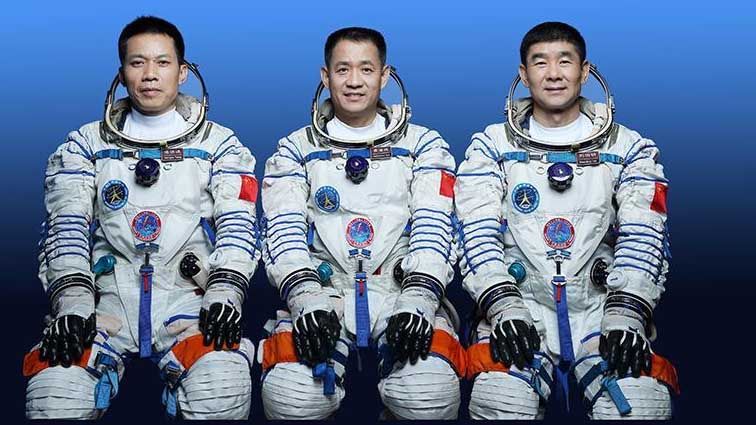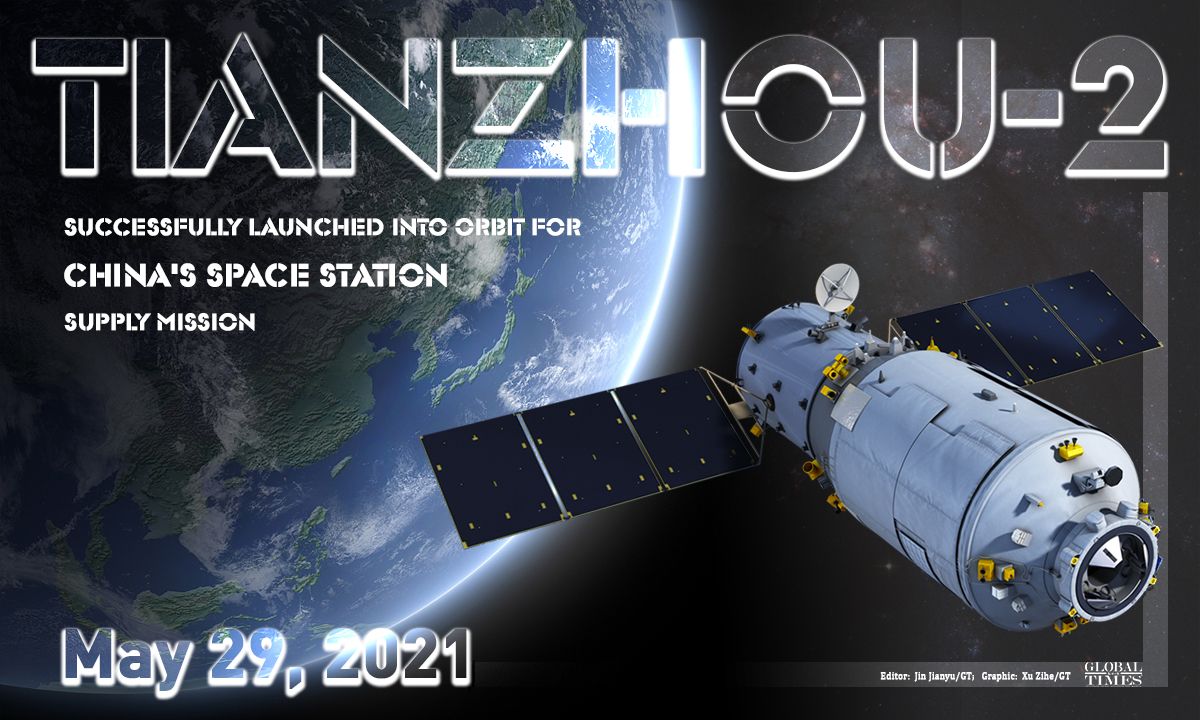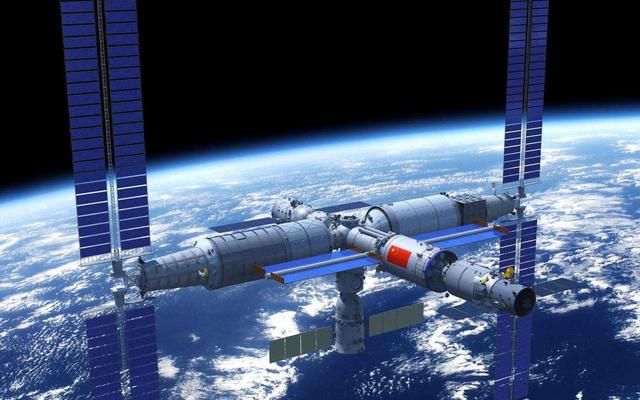‘Divine Vessel’ Rocket Launches China’s First Human Spaceflight Since 2016
Article by Janis Mackey Frayer June 17, 2021 (nbcnews.com)
• On June 17th, the Chinese Long March-2F rocket carrying the Shenzhou-12 capsule successfully launched from the Jiuquan Satellite Launch Center in the Gobi Desert, sending three astronauts on a historic mission to an orbiting space station that China is currently building. It was the first time in five years that China has sent humans into space. (see 1:07 minute video of launch below)
• Shenzhou-12, or “Divine Vessel,” is one of 11 planned missions to complete construction of China’s 70-ton ‘Tiangong’ or “Harmony of the Heavens” space station that should be up and running by next year. The astronauts will remain docked with the main Tianhe section of the station for three months to perform spacewalks, maintenance work and critical testing of life support and other systems.
• “I believe that in the near future, when the Chinese space station is complete, we will see Chinese and foreign astronauts taking on joint missions,” China Manned Space Agency Assistant Director Ji Qiming said at an earlier news conference. “Exploring the vast universe, developing space activities and building a powerful space nation is our unremitting space dream.”
• The 20 year-old International Space Station, or ISS, which has hosted astronauts from the U.S., Russia and a number of other countries is set to be decommissioned after 2024. China has long been frozen out of and ISS mission due to American concerns over the Chinese space program’s secrecy and connections to its own military. Moscow has hinted that it may withdraw from ISS cooperation in 2025, meaning China could be the only country with a functioning space station.
• The Russian space agency, Roscosmos, also signed an agreement in March with the Chinese National Space Administration to build a base on or around the Moon, which they will call the International Scientific Lunar Station. “All the firsts that the U.S. and the USSR did in the Cold War, China is just ticking them off,” said Jonathan McDowell, an astrophysicist at the Harvard-Smithsonian Center for Astrophysics. “Now they’re at the point where they’re starting to think, ‘OK, we’re not just copying the West anymore, we’re going to start doing our own thing’. And that’s going to be very interesting to watch.”
• On the day before the launch, the three Chinese astronauts (pictured above) met with reporters from inside a germ-free glass chamber. Veteran Nie Haisheng, 56, was looking forward to his third trip to space, while Liu Boming, 54, took part in a 2011 mission that included China’s first spacewalk. They were joined by 40-year-old Tang Hongbo, who was looking forward to his first journey up to the stars, having been selected for training in 2010.
• After Tianhe’s main module was successfully launched last month, state media reported that President Xi Jinping wrote a letter to congratulate Chinese engineers for a breakthrough that earned a place in the nation’s history. NASA and others scolded Beijing for acting recklessly by allowing a rocket booster from that mission to fall to Earth in a seemingly uncontrolled manner.
• The Shenzhou-12’s launch was covered on state television and celebrated as a matter of prestige ahead of the Communist Party’s 100th anniversary next month. For Xi, the space station holds symbolic value in his vision of his country as “a space power in all respects.”
• But as China pours billions of dollars into its space programs, including an exploration of the dark side of the Moon and its recent landing of a rover on Mars, some analysts fear that its lack of international coordination is creating a dangerously competitive playing field in space. “There is no doubt the U.S. is the most advanced,” Zhou Jianping, the chief designer at China’s Manned Space Agency told NBC News. “Regardless of scale, China develops space programs out of our country’s own need … to fulfil our own dream.”
 JIUQUAN, China — A Chinese rocket blasted off from a launch pad in the Gobi
JIUQUAN, China — A Chinese rocket blasted off from a launch pad in the Gobi Desert on Thursday, sending three astronauts on a historic mission to an orbiting space station China is building.
Desert on Thursday, sending three astronauts on a historic mission to an orbiting space station China is building.
Fire and huge clouds of dust could be seen in the distance when the Long March-2F rocket carrying the Shenzhou-12 capsule roared away from the Jiuquan Satellite Launch Center, as China’s space race with the United States and Russia continues to gather pace.
It was the first time in five years that China has sent humans into space.
For Rong Yi, the rocket’s chief designer, it was hard to see it go.
“We have invested so much energy,” she told NBC News, likening the rocket to raising a child. “But I am thrilled to see it fulfill its duty within 10 minutes.”

Shenzhou-12, or “Divine Vessel,” is one of 11 planned missions to complete construction of China’s 70-ton Tiangong or Harmony of the Heavens space station that is set to be up and running by next year.
construction of China’s 70-ton Tiangong or Harmony of the Heavens space station that is set to be up and running by next year.
The astronauts will remain docked with the main Tianhe section of the station for three months — China’s longest crewed mission yet — to perform spacewalks, maintenance work and critical testing of life support and other systems.
“I believe that in the near future, when the Chinese space station is complete, we will see Chinese and foreign astronauts taking on joint missions,” China Manned Space Agency Assistant Director Ji Qiming said at a news conference Wednesday ahead of the launch.


“Exploring the vast universe, developing space activities and building a powerful space nation is our unremitting space dream,” he said.
China has long been frozen out of the International Space Station, or ISS, a project launched 20 years ago that has served as the ultimate expression of post-Cold War reconciliation between Russia and the United States. American concerns over the Chinese space program’s secrecy and connections to its military were largely responsible for that.
But the aging ISS that hosted astronauts from the U.S., Russia and a number of other countries is set to be decommissioned after 2024. As broader U.S.-Russia relations deteriorate, Moscow has hinted that it may withdraw from ISS cooperation in 2025, meaning China could be the only country with a functioning space station.
Roscosmos, the Russian space agency, also signed an agreement in March with the Chinese National Space Administration to build a base on or around the Moon, which they will call the International Scientific Lunar Station.
1:06 minute video of the launch of the Long March-2F rocket
carrying the Shenzhou-12 capsule (‘NBC News’ YouTube)
FAIR USE NOTICE: This page contains copyrighted material the use of which has not been specifically authorized by the copyright owner. ExoNews.org distributes this material for the purpose of news reporting, educational research, comment and criticism, constituting Fair Use under 17 U.S.C § 107. Please contact the Editor at ExoNews with any copyright issue.








